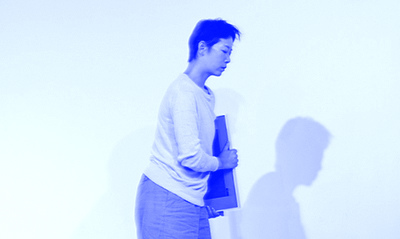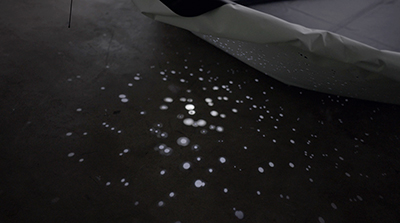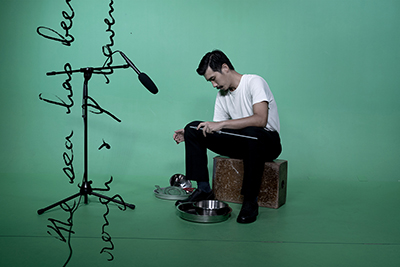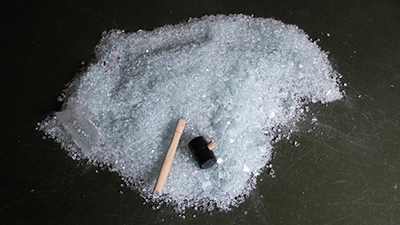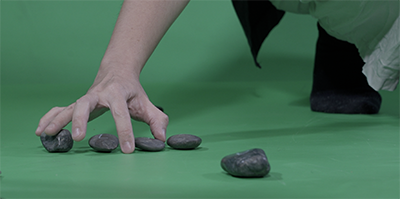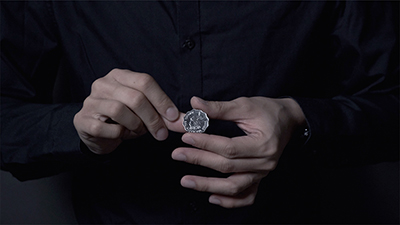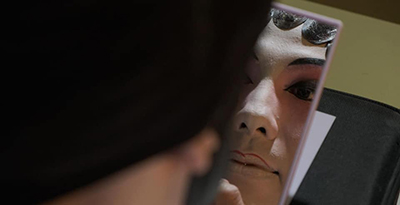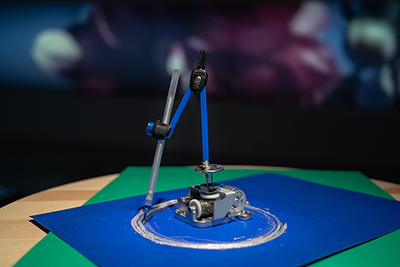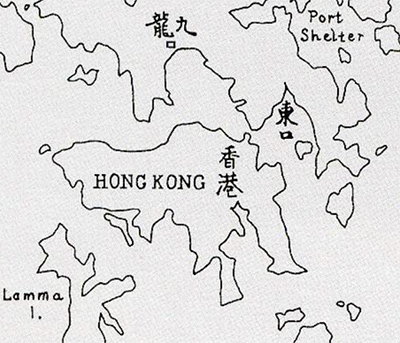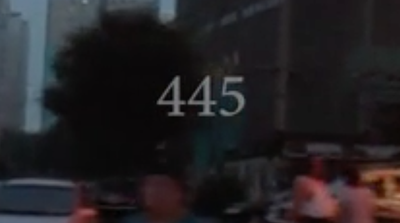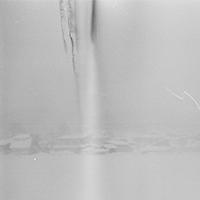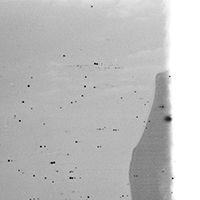Solo exhibition at Parasite’s booth in Art Basel Hong Kong. (27-31 March 2018)
Commissioned by Parasite; curated by Qu Chang.






(Installation View at Art Basel, Hong Kong)
From Whence the Waves Came
– Qu Chang, Associate-curator, Para Site Art Space, 2018
From whence the waves came, Law researches Hong Kong’s landscape and cartography with an approach that is at once sentimental and investigative. Drawing on this research, she creates an alternative map of the city constructed through the stories of migrants from different time periods, interlaced with meaningful events, memories, and imaginary reflections.
Three stories are told here: one is of the Haifeng violinist, Ma Si-Cong, who fled to Hong Kong during the Cultural Revolution and eventually emigrated to the United States; another is of Law’s parents who left Shanwei for Hong Kong in a self-constructed sailboat in 1979; and that of Tom and his parents, who arrived in Hong Kong by boat from Vietnam in the late 1980s as refugees and were later repatriated after having spent many years in Hong Kong’s Whitehead Detention Centre. The stories are each narrated by their protagonist: Ma Si-Cong’s melancholic tune from the traditional Chinese string instrument, the erhu; Law recounting family experiences; and Tom reflecting on his changing environments. Strung together with remembered images of Hong Kong’s misty seascape, the flower-shaped two-dollar coins, and the entangled political events throughout Southeast Asia at the time, these stories are brought together like crashing waves, only to drift apart.
Law builds a layered space of memory with fragmented visual materials like news footage, family albums, photographs from refugee camps, and drawings by Vietnamese child refugees (from the Art in the Camp archive). Within this space, she superimposes stories spanning thirty years into one kaleidoscopic view of the sea: the storm that Law’s parents survived, the obstructed grid view of the sea from within the detention centre, and the imaginary seascapes drawn by children. Haunted by echoes of political oppression and the sea as a symbolic commonality, From whence the waves came stirs together the memories of Hong Kong as a city of displacement.
The song Sea Breeze by Haifeng folk band, Wutiaoren, poetically embraces the notion that following the breeze as a way of exploring the world should be celebrated and encouraged. Seventy-eight years prior to the release of Sea Breeze, Ma Si-Cong composed the renowned Song of Nostalgia originally based on a Mongolian folk song. The song was later used as a propaganda tune by the Chinese authorities to stir up nationalistic melancholy amongst the Chinese communities in Taiwan and Southeast Asia. Between the conceptions of “leaving home” and “homesickness”, Law opens up an ambiguous space that summons at once the idea of foreign land and home, separation and connection, island and root.
The project also includes an essay on the Art in the Camp archive from the International Institute of Social History, Amsterdam, by researcher Leung Ho-yin. Many visual materials from this archive can be found in the exhibition’s video works.
那傳來浪潮的方向
– 瞿暢, Para Site 藝術空間副策展人, 2018
羅玉梅時常在創作中以香港的地貌與地圖繪製為入口展開兼具感性與研究性的調查,她在最新的委託創作「那傳來浪潮的方向」中將數個不同時期的移民故事透過檔案素材的交織,編繪出一幅糅雜著事件、記憶和想像的城市地圖。三段個人的遷移故事在這裡透過當事人、藝術家以及二胡樂器的娓娓道來纏繞在一起:60年代因文革而逃亡香港、後移居美國的海豐小提琴家馬思聰;1979年從中國汕尾自製帆船逃往香港的藝術家父母;以及80年代末期隨家人逃難至香港羈留營、後被遣返回越南的男童Tom──他們的敘述沿著香港迷離的海岸線風光、花瓣形狀的硬幣和交錯相連的政治事件,隨著海潮的流動聚合在香港,又各自漂離。
羅玉梅將搜集的新聞影像、家庭相簿、越南羈留營的相片及孩童們繪畫的風景(來自90年代香港「越營藝穗」項目檔案)作為故事的視覺素材,在將它們打碎重組的過程中,把這些橫跨三十餘年的故事繪織在由不同遷移者的視野交疊而成的南方海景之中,這其中既有汕尾夫婦倖存於南海風浪時的驚濤駭浪、也有羈留營裡越南孩童透過圍欄所見到的被切割的海景和難民孩童繪畫的海洋風貌──這些交織的記憶、歷史和地貌勾勒著政治起伏下的浪潮與人。「那傳來浪潮的方向」仿若一幅跳躍且迷離的風景疊影,透過影像、聲音、物件和記憶的碎片搭建出一個情緒化的歷史空間,並在此空間中審慎又詩意地編織著香港作為流離和留守之地的光影。
樂隊五條人在2015年民謠歌曲《海風》中用海豐方言唱到了離開縣城、隨著海風去探索世界的想像;七十八年前,同樣來自汕尾的音樂家馬思聰則摘取綏遠民歌《城墻上跑馬》的曲調,寫出悠揚感傷的《思鄉曲》──這支樂曲成為中央人民廣播電台對台灣及東南亞進行民族主義宣傳的主打曲目。站在「出走」和「思鄉」之間,羅玉梅在作品中勾畫了一個曖昧的空間,它既是異土又是故鄉、既是離散又是凝聚、既是浮島又是歸處。
Yip
BW Photography by Law Yuk-mui | 42X59.4CM | 2016
Her name is Yip – meaning ‘leaf’ in Chinese.
There is a Chinese saying that goes: ‘Falling leaves return to their roots’. My mother is called ‘Yip’. Where does she think her root is?
她的名字叫葉。
中國人有一句話叫「落葉歸根」,我的母親名叫葉,不知道她覺得自己的根在那?


Tom
BW Photography by Tom | 29.7X42CM | 2017
In the summer of 2017, I met Tom in Ho Chi Minh City. The first time I met Tom, he told me he grew up in a Vietnamese refugee camp in Hong Kong. The Hong Kong he remembers was very beautiful. I gave him these two coins, just like the ones in his memory: in the shape of a flower.
2017年的夏天,我在胡志明市認識到Tom。初次見面Tom 告訴我他小時候是在香港的越南難民營長大。他記憶中的香港,很美。 這兩杖硬幣是我送給他的,是他記憶中那個呈花的型狀的香港硬幣。


(L) Her Name is Yip
Color | HD Video | 8’37” | Stereo | 2018
(R) His Name is Tom
Color | HD Video | 11’11” | Stereo | 2018


(Yip, film stills)

(Tom, film stills)
Nostalghia
Musical Scores |29.7X42CM | 2018


Nostalghia
Performer, Li Chi-tat
Color | HD Video | Stereo | Loop play | 2018

Yip’s collection
Coins of Hong Kong with Elizabeth the Second | Acrylic box | Mirror | Steel pedestal | 2018
125 (H)X30.5 (W) X30.5 (L) CM



Waves Surging From the Archives
Leung Ho Yin, 2018
One utterly dull afternoon, Law Yuk Mui recorded her mother taking an afternoon nap at home. Sleeping on her side, her mother had her back towards the camera, the way Scarlett Johansson had her afternoon nap on the hotel bed alone in her panties in the opening scene of Lost in Translation–even when being in a foreign land, one could still be settled in a cosy place. Similarly, the artist’s mother came to Hong Kong as a refugee. Yet, she is still able to form her own family on this piece of foreign land. A foreign land isn’t equivalent to a strange space. Beyond cultural conflicts or integration, there is still a private space you can call your own. Even if this private place is only sufficient for an afternoon nap, it is intimate and warm all the same. Through video images, Law Yuk Mui’s new work whips up waves in that private sphere by means of history and personal stories, archives and photos from family albums to reconstruct the experience of her mother and her Vietnamese friend, Tom, have gone through in a foreign land.
In the video clip about Tom, we see a lot of children’s drawings and photos of everyday life in a prison-like place. In fact, these images come from the archives of ‘Art in the Camp’ (1988-1991), a project specifically for Vietnamese refugees in Hong Kong and also Hong Kong’s earliest art project with social participation in mind. In 1989, there were nearly six thousand Vietnamese children in Hong Kong and Tom was one of them. Tom and other children were assigned to stay in the Whitehead Detention Camp. While entrance and exit were restricted at the Camp, it didn’t limit the children’s imagination about the world. To these children, the drawing paper is their ‘Anywhere Door’ to the rest of the world, embodying their private imagination process in a foreign land. However, as the British Hong Kong Government gradually tightened the refugee policy, along with the outbreak of the 1996 refugee riot (as shown in the video), the Detention Camp ceased to operate in 1999. Most of the Vietnamese refugees were repatriated and the ‘Anywhere Door’ that had brought those children to the outside world was closed. The ‘Art in the Camp’ archives were exported to Amsterdam. Apart from the exhibition in Lingnan University in 2008, the documents otherwise remain quielty in the archives.
Due to research, I flew to Amsterdam last August to study the archives again. The archive staff didn’t categorise the contents and the cardboard boxes were left at a corner in the archive to gather dust. Every time after arranging the documents, my fingers turned grey. As a researcher, my first task was to look for a rationale for the document categorisation and attempt to summarise it into a one-page table of contents, before viewing the documents from the aspect of art history. The archives consist mainly of drawings and handicrafts, along with contents such as photos taken at the Camp at that period, administrative documents, clippings and Tu-Do, a magazine founded and circulated in the Camp. The drawings have been classified respectively into adults’ and children’s works. Later, Law Yuk Mui got hold of the same batch of documents. At the very beginning, she had already put her mind to the photos of everyday life and children’s drawings and let her instinct tell her how to edit the images. You might as well say she was feeling the documents, rather than sorting them out. And her feelings weren’t based on imagination. It was actually derived from a coincidence: she came across a young artist in Ho Chi Minh City last summer. After striking up a conversation with him, she learned that he was one of the children growing up at the Whitehead Detention Camp. They then started talking about his favourite flower-shaped two-dollar coin of Hong Kong. After that, when I met Law Yuk Mui for dinner and mentioned the contents of the archives, she told me about her recent encounter with Tom.
These coincidences seem to have re-opened the ‘Anywhere Door’ twenty years ago, inviting us to enter the worlds of these two foreigners: the artist’s mother and Tom, who strove to create their own spaces in Hong Kong. One of them succeeded in settling down and the other had to be repatriated. Weaving determinism, the news video clips, family photos and the different images from the archives have thus co-created Law Yuk Mui’ s new work. (Translation: Winnie, Chau Wing-yu)
從檔案庫傳來的浪潮
梁皓然, 2018
一個百無聊賴的午後,羅玉梅在家裡記錄母親午睡,側睡而背對著鏡頭的姿勢像《Lost in Translation》 的開場,穿著內褲的Scarlett Johansson 在酒店的床上獨自午睡:即使人在異鄉,也能棲身在舒適的小天地。正如藝術家的母親,以難民身份來到香港,仍然可以在這片異地建立自己的家庭。異鄉不等於是陌生的空間,在文化的衝突或互融之外,還有一處只屬於自己的私密空間,儘管那私密的地方只夠睡一場午覺,卻依然貼身而溫暖。羅玉梅的新作以影像撈起從那私密一方傳來的浪潮,通過歷史與個人的故事、檔案庫與家庭相冊的照片重新組織藝術家母親和她的越南朋友Tom活在異鄉的經歷。
在那段關於Tom的影像裡,我們看到不少兒童畫和貌似監獄的生活照。其實那些影像都來自「越營藝穗」的檔案庫。「越營藝穗」 (1988-1991) 是一項為留港越南難民而設的計劃,也是香港最早有社會參與意識的藝術計劃。在1989年,香港有接近六千名越南兒童,Tom是其中一位。Tom與其他小朋友被安排住在白石羈留營裡,雖然出入自由受到限制,但阻礙不了小孩們對世界的想像。對於小朋友來說,畫紙成為了他們通往世界的隨意門,是他們在異鄉進行想像的私密過程。不過,隨住港英政府對難民政策漸趨收緊,甚至爆發如影像中看到的1996年難民暴動事件,羈留營終於在1999年成為歷史,大部份難民被遣返越南,那扇把小孩的想像帶到外界的隨意門也被關上。「越營藝穗」的檔案庫被運送到阿姆斯特丹,除了2008年曾經在嶺南大學作展覽外,大部份時間亦無人問津。
因為研究的關係,我在上年8月飛到阿姆斯特丹重新翻閱檔案庫。在當地管理檔案庫的職員沒有把檔案內容分類,只把這些紙皮箱放在藏庫一角,任由封塵,所以我每次整理完,手指都是灰色的。從研究者的角度看,我的工作是要先找一個邏輯把資料分類,試圖歸納一頁目錄,再以藝術史的角度看待文件。這檔案庫儲存的以畫作和手工藝品為主,亦有當時營內的照片、行政文件、剪報、在營裡創辦及流傳的雜誌《自由(Tu-Do)》等,而畫作又分成人和小孩的作品。 同一堆資料去到玉梅手上,她一開始就把目光鎖定在營裡的生活照和兒童畫,並由直覺告訴她裁剪影像的方法。與其說她在處理檔案庫的文件,倒不如說她在感受文件。而她的感受並非憑空想像,而是因一次巧遇而來的:她在上年夏天於胡志明市偶遇一位年輕藝術家,「搭訕」中得知對方就是當年其中一位在白石羈留營成長的小孩,又開始聊起他最愛香港的花形「兩蚊」。然後我有次和玉梅吃飯說起這檔案庫的內容,她又才說起最近與Tom的偶遇。
這些巧合好像重新打開了那扇二十多年前的隨意門,並邀請我們走進兩位異鄉人的世界:藝術家的母親與Tom,他們來到香港都努力地建立屬於自己的小天地,一位成功而能落地生根,另一位卻被逼遣返家鄉。如是者,新聞片段、家庭照和檔案庫裡的不同影像就貫穿在這組《曼谷瑪利亞》式的命運決定論裡,共同組成羅玉梅的新作。
